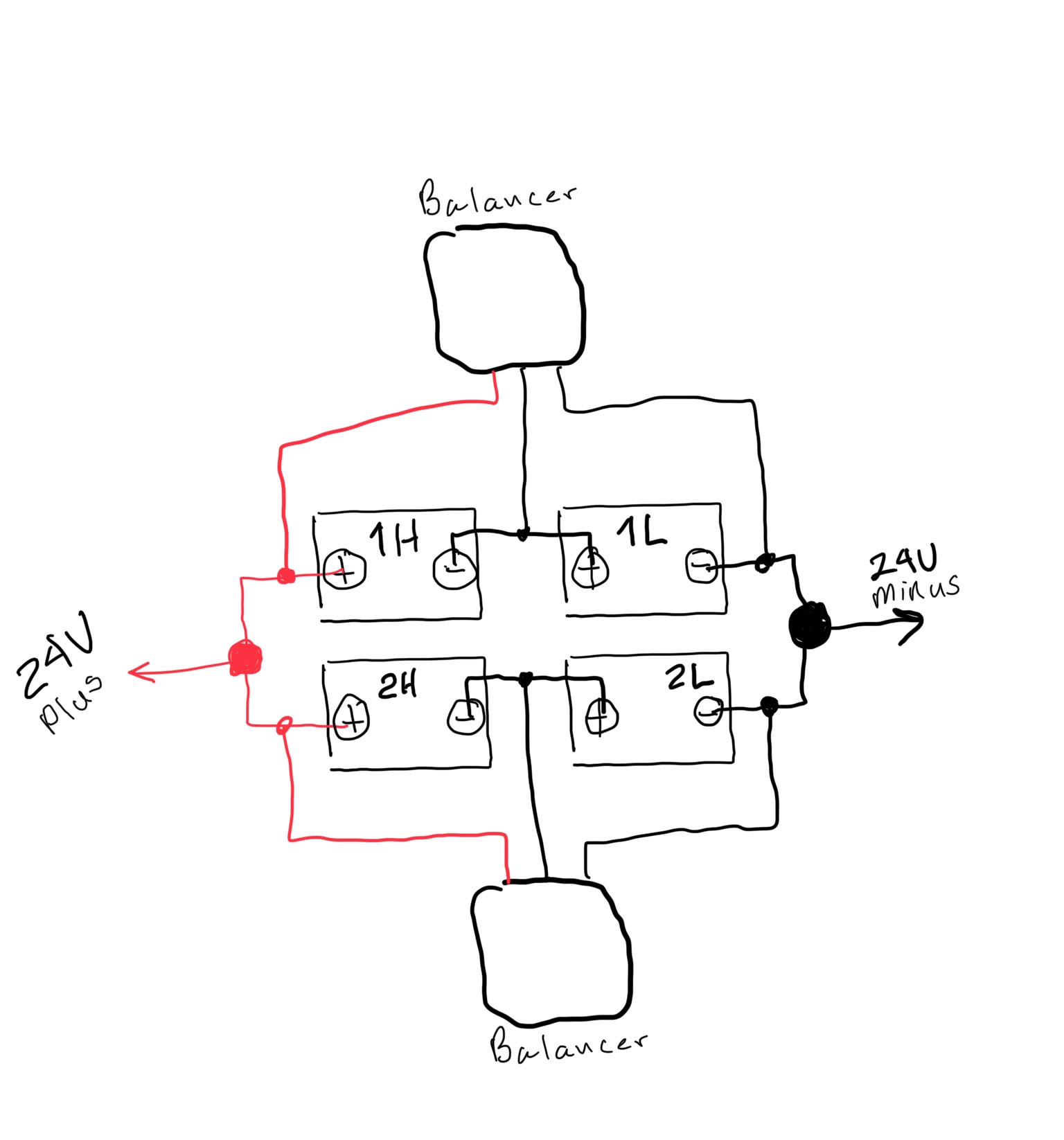System: Eight 116 A-h Firefly AGM batteries combined to a 464 A-hr, 24V bank in daily cycle service aboard a sailboat. I installed the balancers for two reasons. Since the Firefly batteries, like most AGMs, can not be "equalized" in the normal sense, they need a balancer when connected in series. I also wanted an alarm system to alert me to an out of balance situation so it could be corrected before batteries were damaged by long term under/over charging.
I used two Balancers, each wired to half the battery bank as shown here: (Half bank shown, the other half had no connections o this side except at the + and - bus bars.)

All cables are all length matched, and connected to proper bus bars.
When I started having unexplained problems with battery capacity, I dove down deeper. The balancers switched on with every charge cycle as designed, and never showed more than a transitory illumination of the balance lights. The alarm never went off.
When charging in absorbtion at 28.8V, I measured the voltage from 24V(+) to the midpoint as wired. 14.4V, and also from 24V(-) to midpoint, 14.4V. So far so good. But them I disconnected the wires between 1H/L and 2H/L, isolating the two series pairs. Now the source of the issue became clearer.
From 24V(+) to the midpoint of 1H/L: 15.2V
From 24V(-) to the midpoint of 1H/L: 13.6V
From 24V(+) to the midpoint of 2H/L: 13.6V
From 24V(-) to the midpoint of 2H/L: 15.2V
Note that this state of affairs was essentially the same on the other half of the battery bank. The batteries were "perfectly" balanced as a GROUP of 4, but the individual series pairs were seriously out of whack. In thinking about this with this data, it becomes clear that when wired as recommended there is NO WAY for the balancers to fix this problem, or alarm when it happens.
Am I missing something? Should I have skipped the midpoint cross-connections and just wired a balancer for each series pair and been done with it? Is there a downside to that (other than the cost of the balancers)?

 Wiring like this is more expensive, with more balancers, but the batteries are expensive too. And with this set up ALL the batteries have to be at the same voltage all the time, baring an internal short or other problem. And if the balancers can't fix that, then I'll see it in their operational lights and alarms.
Wiring like this is more expensive, with more balancers, but the batteries are expensive too. And with this set up ALL the batteries have to be at the same voltage all the time, baring an internal short or other problem. And if the balancers can't fix that, then I'll see it in their operational lights and alarms.